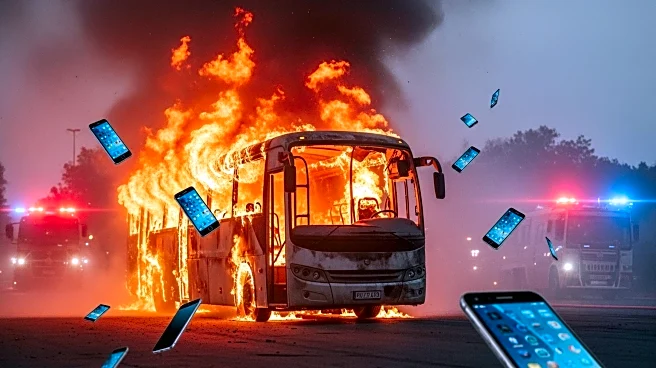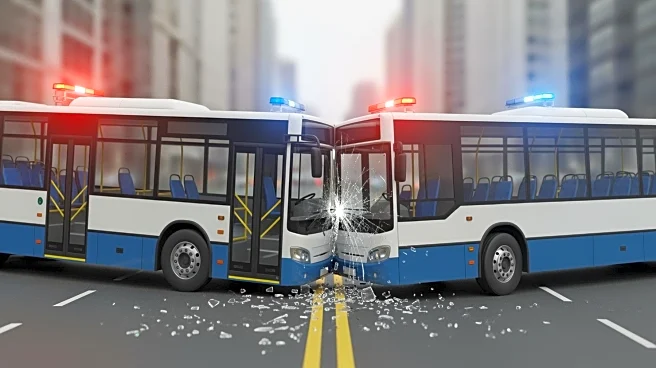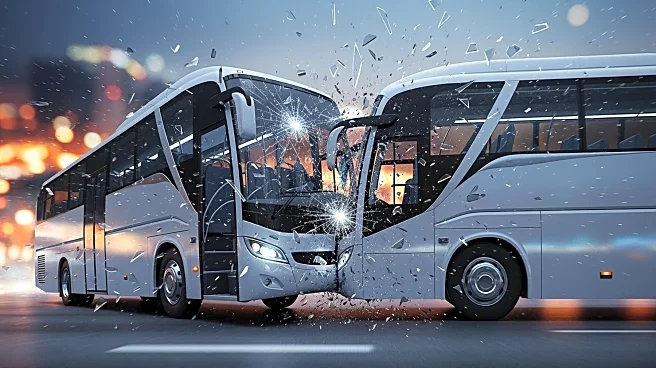What's Happening?
A tragic bus fire in southern India resulted in the deaths of at least 20 people, with reports indicating that the presence of hundreds of smartphones onboard intensified the blaze. The Bangalore-bound
bus, carrying approximately 40 passengers, collided with a motorcycle, rupturing its fuel tank and triggering an explosion. Forensic experts revealed that the bus was transporting 234 mobile phones, whose lithium-ion batteries likely exacerbated the fire. The batteries, along with flammable furnishings and electrical batteries for the air conditioning system, contributed to the rapid spread of the fire. The smartphones, valued at 4.6 million Indian rupees, were being sent from Hyderabad to an e-commerce company in Bengaluru. Authorities have launched an investigation into possible negligent driving, as the bus driver fled the scene and the motorcyclist was among the deceased.
Why It's Important?
The incident highlights the potential dangers associated with transporting large quantities of lithium-ion batteries, which are commonly found in smartphones. These batteries can pose significant fire risks when damaged, leading to uncontrollable temperature increases known as thermal runaway. This event underscores the need for stringent safety measures in the transportation of electronic devices, particularly in public transport settings. The tragedy may prompt regulatory bodies to reassess safety protocols and enforce stricter guidelines to prevent similar occurrences. The investigation into negligent driving could also lead to legal repercussions and changes in driver accountability standards.
What's Next?
Authorities are expected to continue their investigation into the crash, focusing on the role of negligent driving and the bus driver's actions. The findings could lead to legal action against responsible parties and potentially influence policy changes regarding the transportation of hazardous materials. Additionally, there may be increased scrutiny on the safety standards of public transport vehicles, particularly those carrying electronic devices with lithium-ion batteries. Stakeholders, including transport companies and regulatory agencies, may collaborate to develop improved safety measures to prevent future incidents.
Beyond the Headlines
The incident raises broader questions about the safety of lithium-ion batteries, which are widely used in consumer electronics. As demand for these devices grows, manufacturers and transporters may face increased pressure to ensure safe handling and transportation. This could lead to innovations in battery technology aimed at reducing fire risks and improving safety. Furthermore, the tragedy may spark discussions on the ethical responsibilities of companies involved in the production and distribution of potentially hazardous materials.












